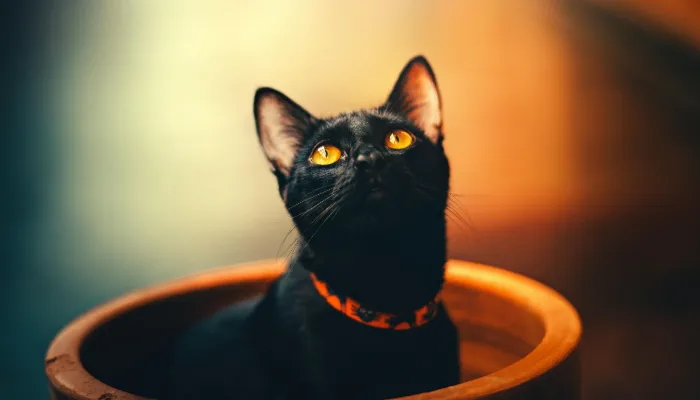The predisposition of cats to display unusual and decidedly unfocused behavior patterns makes their moods very hard to understand even with the cat translator available online. Cats tend to be quieter and dramatic when they are angry, which is different from dogs that show their feelings openly.
If you’ve wondered, how do cats say “I hate you”? their movement patterns, vocal sounds they make, as well as their daily activities may hold value. Even though cats do not exhibit “hatred” like we do, they are still capable of demonstrating myriad different types of discomfort.
This article will attempt to pinpoint the reasons for certain behaviors that revolve around the different ways of expressing dissatisfaction cats feel towards their owners or another cat.

Signs Your Cat is Not Happy With You
Cats are socially emotional creatures no less than humans, and upon proper investigation one can find out what their moods are. Here are some of the most common signs how do cats say “I hate you”
Flicking and Swishing Of the Tail
It’s a notable fact that an irritated cat will show emotional discomfort by swishing and flicking of their tail. Also, if your cat’s tail swashes or whips back and forth, they are angered.
What it means:
- If they are slow, more diagonal, oral movements of the tail are restricted, this suggests some moderate restraint.
- A fast, whipping tail suggests strong agitation.
- For some, a puffed up tail would mean being threatened or scared.
Hiding and Trying to Get Away
A cat avoiding you distinctly means how do cats say “I hate you” Unlike the everyday version, a cat may run away when a person enters the room, refuse to come when called for, or even hide underneath furniture.
Reasons for this action:
- They may feel overwhelmed or expose a sense of unsafety.
- Past actions such as their previous trip to the vet might have bothered them.
- They might be in need of some personal space and alone time.
Ears Pulled Back or Flattened
A cat expresses its feelings by its position of body parts. Ear positioning depicts emotions as well. If the ear is flat versus a cat’s head, that means they are irritated or scared.
What it depicts:
- Slightly pulling back ears denote mild discomfort.
- Ears, fully flattened serve as a suggestion of Stress or anger.
The next time you encounter this sort of behavior, it is a good time to allow the cat space to calm down.
Uninvitedly Scratching or Biting You
Just like any other type of animal, a cat can bite or scratch depending on a range of reasons. However, if your cat turns angry out of the blue, then there is a chance your cat is trying to tell you something.
Reasons for this action:
- Maybe the cat is over stimulating.
- Maybe trying to set boundaries.
- Uneasy with the interaction being had with them.
If they resort to violence unexpectedly, try reassessing your approach with the cat without pushing their limits.
Excessive Hissing or Growling
In addition to pain or anger, excessive hissing and growling can indicate animosity. Furthermore, if your cat hisses when you approach them, it means they want to keep their distance.
Possible reasons:
- They associate you with pain.
- They feel threatened.
- They are in pain or distress.
If this behavior continues, you should go visit the vet immediately to eliminate any underlying medical problem.
Just because your cat hisses and growls does not mean that your cat dislikes you. This behavior is done to avoid conflict and should be understood in order to improve your relationship with your cat.
Reasons Why Your Cat is Upset
With a basic understanding of cat annoyance, let us take a closer look into the reasons that could possibly explain the cat’s behavior.
- You’re Not Their Favorite Person
- When compared to dogs, cats highly desire their independence. If you are someone who infrequently spends time with or talks to the cat, it might feel angry or dejected.
- You Handled Them Roughly
- With cats being such highly independent creatures, they do not appreciate being picked up at all. Any sudden alteration, like a new piece of furniture or a new pet, can put them on edge.
- You Changed Their Environment
- If you moved the cat’s favorite food icon drop or if you changed the cat’s icon pet food, the cat might feel ill-at-ease.
- You Brought Them to A Vet
- Your cat, and many more, are likely to associate vet visits with increasing stress levels and discomfort. If your cat avoids you after a vet visit, they might be holding a temporary grudge.
Understanding the underlying causes of your cat’s behavior can go a long way in helping them. Taking this step can make it easier to strengthen your bond with your furry friend.
How to Make Amends with Your Cat?
You do not need to overly panic if your cat seems to be ignoring you. Here are some ways you can work on your relationship and resolve issues of trust.
1. Give Them Space
If your cat is angry, it is best to let them approach you rather than the other way around. It is always best to avoid forced interaction and give them the space they need to feel comfortable.
2. Use Positive Reinforcement
Remember to always use stimulating word reinforcement and treat positive behavior when your furry friend shows it instead of scolding them.
3. Play With Them
Playing with a cat is a great way to regain trust, and is particularly useful when first trying to establish it. Use interactive toys to ensure you both have fun during playtime.
4. Respect Their Boundaries
Avoid areas they dislike being touched such as their tail or belly. Observe their body language to gauge what they like.
5. Reduce Stress
Ensure your cat has spaces that are safe and quiet for them to hide away in. Try to reduce loud noises, as well as any abrupt changes to their surroundings.
At last, the cat’s range of trust can be achieved, as well as all impending disputes might be kept at bay.
Conclusion
If you’ve ever wondered, how do cats say “I hate you”? Have you taken the time to notice how your cat interacts with you, what is your cat’s body language and behavior towards you?
Pets never truly hate their owners, but there are ways through which they show that they are irritated, stressed, or uncomfortable.
When trying to mend your bond, try understanding what the communication such as tail flicking, hissing, or avoiding you means. Because of the independent nature of cats, setting boundaries, stress free reinforcement, and using positive aids can greatly improve your bond.
Now that you know the answer to How do cats say “I hate you” make sure that your cat is always comfortable, loved, and feels safe.
